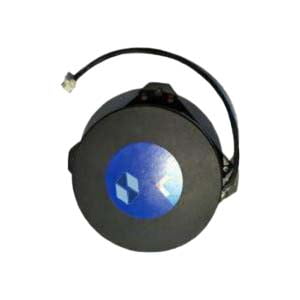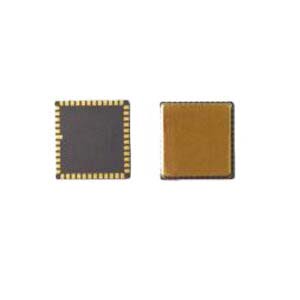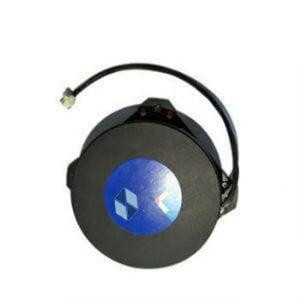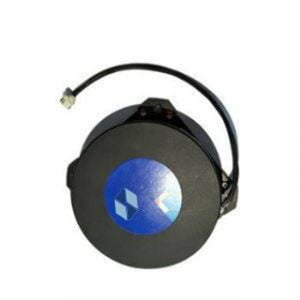MEMS gyroscope is the result of constantly updated technological innovation in recent years. As it enters various industrial fields, it has become a direct threat to FOG's status. In the past, most fields would choose FOG, but now more and more industries are turning to try and use MEMS gyro. What is the reason for this phenomenon? How would you choose an inertial sensor? This article will introduce MEMS and FOG’ concepts, working principles, differences, etc. I hope that after reading this, you will have a clearer understanding of these two gyroscopes.
What is a MEMS gyroscope?
MEMS is the abbreviation of Micro Electro Mechanical Systems, which is micro-electromechanical systems. This system is based on micro/nano technology. Microelectromechanical systems can collect and process data by themselves, and can output data. MEMS is an emerging technology that has developed in recent years and is changing the way of the industry views and working method.
How do MEMS gyroscopes work?
The traditional gyroscope mainly uses the principle of conservation of angular momentum. We can understand it as a constantly rotating object. Its axis of rotation does not change and is not affected by the rotation of the object. Compared with the working principle of traditional gyroscopes, MEMS gyroscope is very different. Since MEMS gyros are chip-based, its size is very small and it is impossible to create a rotating structure. Therefore, MEMS gyroscope is based on the Coriolis force, which refers to the tangential force experienced by a rotating object when it has radial motion. The formula and schematic diagram of the Coriolis force can be seen in the figure below, so MEMS gyro is a device based on mechanical principles.
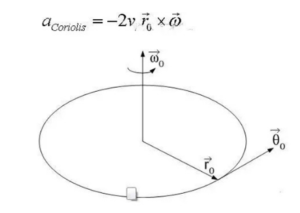
Figure 1. The working principle and formula of Coriolis force
What is FOG?
FOG is the abbreviation of Fiber Optic Gyroscope. FOG is a gyroscope that utilizes the Sagnac effect. Since FOG is based on optical principles, unlike traditional gyroscopes that rely on the momentum moment of the rotor to sense angular motion, FOG is also defined as a non-gyro angular motion sensor.
How does FOG work?
Based on the Sagnac effect, when an annular light path rotates in inertial space around an axis perpendicular to the plane of the light path, an optical path difference will occur between two columns of light waves propagating oppositely in the light path due to the inertial motion of the light waves, resulting in the coherence of the two beams. Interference of light waves. There is a certain internal relationship between the phase difference corresponding to the optical path difference and the rotation angular rate. By monitoring and demodulating the interference light intensity signal, the rotation angular rate can be determined. In the figure below we can see the calculation formula of FOG. Where ‘A=πR2' is the area of the circular light path, and ‘c’ is the speed of light in vacuum.
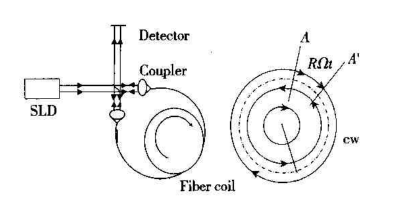

Figure 2. The working principle and formula of Fiber Optic Gyro
FOG has gradually replaced the aging RLG (Ring Laser Gyroscope) and become the mainstream of the market. The reason is that FOG is more advanced, smaller than RLG, and has high accuracy. For example, oil drilling, aerospace, mining and other fields all use FOG, and FOG can provide them with very accurate data. But the emergence of MEMS gyroscope has shaken the position of FOG in the market. Because compared to FOG, MEMS gyroscopes also have many advantages.
Compared with these two gyroscopes, what are the advantages of MEMS as a new technology?
1.Smaller size and lighter weight
MEMS gyroscopes have achieved step-by-step changes compared to FOG. MEMS gyros look like chips and are only about the size of a fingernail when placed on the hand. This is more suitable for various industries, such as special-shaped probe tubes required in the field of petroleum logging. The probe tubes are very thin and need to be extended underground. This is impossible for FOG and can only rely on small-sized and lightweight MEMS gyros to accomplish. Another example is that IMUs (Inertial Measurement Units) are widely used in various fields, especially in the aerospace field. Smaller and smaller IMUs are needed, which requires smaller gyroscopes to meet this demand. Ericco's MEMS gyros are all 11x11x2mm in size.
2.Lower power consumption
Due to its small size, MEMS gyroscopes have lower power consumption and consume less power than FOG.
3.Low cost
Due to its small size, the production cost is lower than that of FOG, making it more suitable for mass production. This is a very suitable choice for industries and companies that need to control costs.
4.Good reliability
MEMS has strong impact resistance and can work in very harsh environments. For example, in the mining and logging fields, the working conditions are very harsh, but MEMS gyroscopes can meet such working requirements.
5.The measurement range is still very good
MEMS gyroscope, like FOG, will refer to values such as measuring range and bias stability, but MEMS has more reference to measuring range, bias instability and angular random walk. For example, ER-MG2-50/100 High Performance North Seeking MEMS gyro is specially designed for ground navigation. Its measurement range can reach 50-100deg/s, and have 0.01-0.02°/hr bias instability and 0.0025-0.005°/√hr angular random walk.
In the past, MEMS gyroscopes were not qualified to be compared with FOG because the technology was immature and the values in all aspects cannot reach the level of FOG. However, with the increasing development of science and technology, new technologies are constantly being innovated every day. MEMS gyroscopes are gradually becoming comparable to FOG. Keeping pace with each other, and having advantages that FOG does not have, it has become an existence that can compete with FOG in the market.
Hope you will have a basic and clear understanding about MEMS and FOG technology. This article just introduces a part of MEMS and FOG knowledge. If you want to learn more knowledge about MEMS and FOG, you can find something useful in ‘More Technical Questions’, if you are interested in the products, you can click ‘Products in Article’. For any questions, please leave your opinions in ‘Ask a Question’ below.
More Technical Questions
1.How accurate is MEMS gyroscope?
2.Where are MEMS Gyroscopes Used?
3.What is the Hardware Interface of Ericco MEMS Gyro
5.Detailed Explanation of FOG Parameters
6.The Advantages and Disadvantages of FOG
Products in Article

